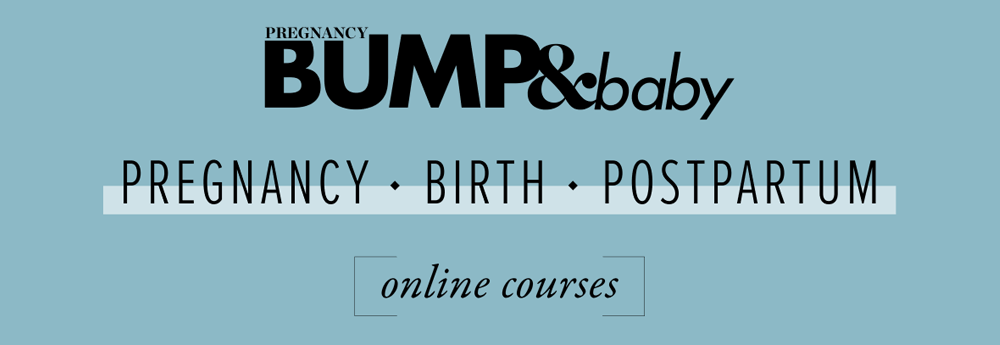Mum
Morning sickness is a bit of a misnomer, because it can affect you any time of day, whenever your blood sugar level drops. There is no “cure” as such, although you can control it by eating regularly, starting with something small in bed before you get up. Experiment to find what works for you:
- Seasickness wristbands are a drug-free way of controlling nausea and they are perfectly safe to use in pregnancy. Simply slip them on and adjust the button to exert gentle pressure three finger-widths down from each wrist (exact instructions with diagrams are included in the box). Even if you don’t believe in acupressure, these bands seem to work. Seasickness wristbands can be purchased from a travel-accessory shop or the chemist (make sure they don’t try to sell you motion-sickness pills instead, though, because even if they say that the pills are “completely natural” or “herbal”, one of the ingredients may still be counter-indicated in pregnancy).
- Ginger: Many women report feeling better if they take natural ginger pills (available from health shops), eat ginger biscuits or drink ginger infusions. Other folk remedies include fresh papaya, bananas, cloves (try chewing five whole cloves), peppermint and lemon.
- Try yoga, meditation or a gentle walk in fresh air.
- If you are more sensitive to smells than usual, identify a smell that you like (it may not be your customary favourite) and carry it with you in a small bottle to inhale whenever you encounter a smell your pregnant body doesn’t like. Lemon or lime will usually do the trick. Note: Do not use essential oils directly on the skin, as it may cause sunburn or (anecdotally) even miscarriage. The only “safe” oils are said to be lavender, rose and chamomile.
- Eating small meals every few hours, and following your food cravings, works well for most women. If mealtime is what unsettles your stomach, try eating something small and salty beforehand. Avoid fatty and spicy food at all times.
- Keep well hydrated: Sip ice water little and often. However, avoid taking liquids with your meals in order to help you keep the food down.
- Vitamin B6 supplements may help, but do consult your LMC about the exact dose, because B6 is toxic in large quantities.
- There are many homoeopathic remedies available for morning sickness, but rather than buying off-the-shelf, it’s always safer to ask a homoeopathy consultant or your LMC to prescribe something for you personally.
- And, finally, get as much sleep as possible, rest often, and avoid stress. There is a documented correlation between how tired you are and how nauseous you feel. In fact, you should practise this as often as you can. After all, you are growing a baby inside you, and that’s the hardest and the most important work you currently do every day.
Dad
Over 80% of pregnant women report feeling bouts of nausea sometime in the first trimester, although some women suffer longer, well into their 6th or 7th month. Because the drop in blood sugar level is to blame, it helps to have something to eat on waking up, ideally 10-20 minutes before getting out of bed in the morning. You can help your partner feel better by bringing her a cup of tea and biscuits to bed. The pregnancy may have affected her taste buds, so be prepared for requests that make you question whether you know her at all – the same woman who used to love strong tea and chocolate might now prefer milk and bland crackers.
Baby
You are the size of a blueberry! So far, your arms and legs have developed as web-like hand and foot stubs. Soon enough, your hands will grow and change to have individual fingers and toes, but right now, they look like little paddles. You’ve also developed your umbilical cord. This tube joins you to the placenta, delivering oxygen and nutrients and even eliminating waste into your mum’s bloodstream.
Things to keep in mind
- Are you glowing? That might just be the only outwardly sign that you’re pregnant at this stage and is a result of more blood flowing to your face, giving you that awe-inspiring rosy glow.
- The baby bump is still on its way, but some of the not-so-fun internal changes that are taking place may make clothes feel a little tighter. Progesterone is an essential muscle relaxant hormone which has the unfortunate side effect of relaxing the bowel muscles resulting in bloating, gas and even constipation.
- Continue to eat well, take prenatal vitamins, be active, drink enough water, rest, and take some time for yourself.
- You may also want to give your skin and digestive tract some extra attention.

Photos in the bumpandbaby.co.nz/week-by-week/ are by Lenart Nilsson. Lenart's series was bought to fame when his photo, considered the greatest photo of the 20th century, appeared on the cover of Life magazine in 1965. “Everyone interprets images differently, depending on their social, cultural and religious background. In the digital era, I believe it is more important than ever to go back and take a look inside ourselves. What better way of doing that than with these photos?” ~ Jane Stene, art gallery director and curator of Lenart's definitive black and white series, told the The Guardian in 2019. It is Lenart Nilsson's wish that his images are never used for political debate about pro-life.






